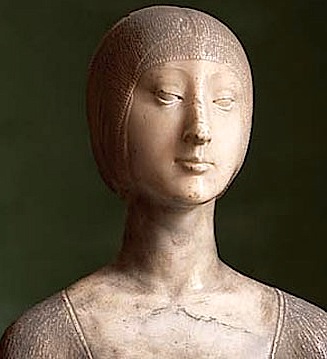Many thanks to a reader from Sicily who recently sent an email about the famous bust of “Eleanor of Aragon” in Palermo’s Palazzo Abatellis. Not only in the Blue Guide, but in many other sources too, this work (c. 1489), by the Dalmatian-born master Francesco Laurana, has been taken to be a portrait of Eleanor of Aragon, daughter of the King of Naples and later wife of Ercole d’Este of Ferrara. On the website for the Region of Sicily’s Department of Culture, however, Alessandra Merra and Valeria Sola argue that the sculpture in fact represents somebody quite different. The full text can be read here, in Italian. For those who do not understand Italian, I’m summarising it below:

Laurana came to Sicily sometime around or before 1468, to Sciacca, summoned by the influential Carlo Luna (scion of a noble house of Aragonese descent), who had probably become acquainted with Laurana’s work at the court of the kings of Naples, themselves also descended from the royal house of Aragon. Laurana received his first Sicilian commissions from Luna, and the bust is not a portrait of Eleanor at all but of a different noblewoman entirely, the wife of Carlo Peralta, Count of Caltabellotta. She died in 1405 and was buried in the Abbey of Santa Maria del Bosco di Calatamauro. The bust stood on her tomb until its transfer to Palermo in the 19th century. The fact that the bust was a posthumous one (sculpted many decades after her death) makes it not a portrait but an idealised image of a virtuous lady, which explains its famously rarefied quality and formal rigour.
Any further thoughts?






